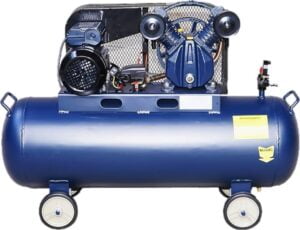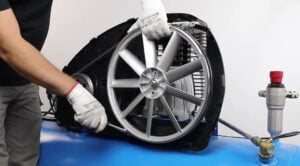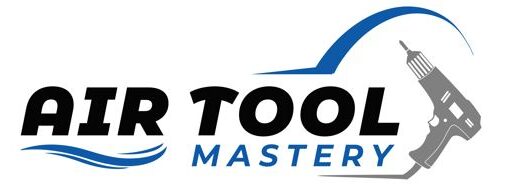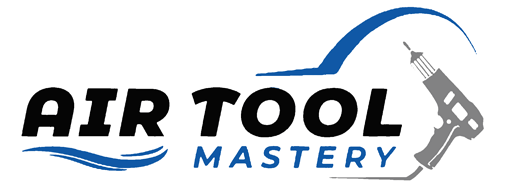Compressors, often known as the “heart” of various mechanical systems, are devices that increase the pressure of a gas by reducing its volume. They find extensive usage in several industries, including manufacturing, automotive, and HVAC (Heating, Ventilation, and Air Conditioning), where they provide the necessary power to tools, maintain optimal indoor air quality, and assist in process operations.
One critical component of these machines is the compressor belt, which plays an instrumental role in its overall performance and efficiency. Just like any other mechanical part, these belts require regular maintenance to ensure their functionality and durability.
Neglecting such upkeep can lead to inefficient performance, frequent breakdowns, and potentially hefty repair costs. Thus, understanding the importance of belt maintenance is crucial for anyone operating, maintaining, or considering the purchase of a compressor. This guide aims to provide an in-depth look at compressor belts, their importance, and how to ensure their longevity.
Some Compressors Use Belts and Some Don’t
Before we delve into the maintenance aspect, it’s essential to note that not all compressors use belts. Some have direct drive systems, which is something I think we should touch on before proceeding.
The difference lies in the type of power transmission method employed by the compressor. Direct drive systems operate by coupling the motor directly to the compressor, eliminating the need for belts altogether. This setup reduces overall maintenance needs and can achieve higher mechanical efficiency levels. So, if your compressor doesn’t use belts, you can skip this guide and focus on other maintenance aspects specific to your model.
The Basics of Compressor Belts
Compressor belts are typically made of rubber and reinforced with cords of fiberglass or steel to ensure durability and strength. They come in various sizes, widths, and types, depending on the specific compressor model they are designed for.
To simplify, think of the compressor belt as the bridge between the motor and the compressor unit itself. When the motor runs, it causes the belt to move. As the belt moves, it drives the compressor, which is responsible for compressing the air.
The belt essentially transfers the energy produced by the motor to the compressor. Without the belt, the energy produced by the motor couldn’t reach the compressor, which means the compressor wouldn’t be able to do its job. Thus, a well-maintained and functional belt is essential for the efficient operation of your compressor.
The Different Types of Belts Used in Compressors

When it comes to compressors, there are generally two types of belts used: V-belts and ribbed or serpentine belts.
V-belts are the traditional type of belt commonly found in older models of compressors. They have a trapezoidal cross-section, which allows them to fit snugly into V-shaped grooves on the pulleys and prevent slipping. V-belts are usually made of rubber and can withstand high tension, making them suitable for heavy-duty compressors.
On the other hand, ribbed or serpentine belts have a flat surface with multiple ribs running along their length. These types of belts are commonly found in newer models of compressors as they provide better grip and reduce slippage. Ribbed belts are also more flexible, which helps them navigate around tight pulleys and corners with ease.
Why Belt Maintenance is Important
Belt maintenance for compressors is crucial for the longevity and efficiency of your compressor. Both V-belts and ribbed belts, due to friction and continuous use, deteriorate over time, compromising the compressor’s performance. Regular maintenance ensures these belts are in optimal working condition, thereby extending their lifespan, which generally ranges from 3 to 6 years depending on the usage and maintenance.
Ignoring belt maintenance can lead to severe consequences. The most apparent is the breakdown of the compressor due to a failed belt, but the implications are more profound. A poorly maintained or worn-out belt can negatively impact the compressor’s efficiency, increase energy consumption, and cause undue strain on the motor. This could lead to premature motor failure, resulting in costly repairs or replacements.
On the other hand, well-maintained belts have a significant positive impact on compressor efficiency. They ensure optimal energy transfer from the motor to the compressor unit, maintaining the compressor’s performance at its peak. This not only extends the life of the compressor but also guarantees energy efficiency, resulting in cost savings in the long run. Therefore, regular belt maintenance is not just an option but a necessity for the overall health of your compressor.
Best Practices: Belt Maintenance For Compressors
Adopting best practices for belt maintenance helps prolong the life of your compressor’s belts and improves the overall efficiency of the equipment. Regular visual inspections are essential, and the belts should be checked for signs of wear, such as cracking or fraying, at least every three months. It’s also necessary to check belt tension periodically, as an overly tight or loose belt can lead to unnecessary wear and tear.
Step-by-Step Guide to Routine Belt Maintenance For Compressors

1. Inspect the Belt
Begin with a visual inspection of the belt for any apparent signs of wear, including cracks, fraying, or glazing.
2. Check the Belt Tension
Use a tension gauge to ensure the belt isn’t too tight or too loose. If needed, adjust the tension according to the manufacturer’s guidelines.
3. Check Pulleys and Alignment
Ensure the pulleys are clean, free from oil and grease, and correctly aligned.
4. Replace if Necessary
In case the belt is damaged or excessively worn out, replace it with a new one of the same type and size.
Tips for Prolonging Compressor Belt Lifespan
To prolong the lifespan of your compressor belts, ensure they are correctly installed and aligned, clean them regularly, and keep them at the proper tension. Consider using belt dressing, a compound that helps to prevent slipping and excessive wear. Always replace worn out belts promptly with the correct type and size to maintain peak efficiency and prevent potential damage to other components of your compressor.
Do regularly inspect and adjust the tension of your belts. Don’t overlook signs of wear and tear such as cracking or fraying. Do clean belts regularly to prevent the buildup of dirt and grease, which can cause premature wear. Don’t use a belt that is not the right size or type for your compressor, as it could significantly shorten the lifespan of the belt and overall compressor performance.
Tips for Maintaining Your Compressor Belt
- Regular Inspections: Check the condition of your belt at least once a month or more frequently if you use your compressor heavily.
- Tension Adjustment: If the belt feels loose, adjust the tension by following the manufacturer’s guidelines. An overtightened belt can cause excessive strain on the motor and shorten its lifespan.
- Cleanliness: Keep your belts clean from dirt, oil, and grease to prevent premature wear. Replace any damaged pulleys that may be causing the buildup of debris.
- Lubrication: Some compressors require regular lubrication of the pulleys and belts. Refer to the manufacturer’s manual for specific instructions.
- Proper Alignment: Ensure that your belts are correctly aligned with the pulleys to prevent excessive wear and tear on the belt.
Signs of a Worn Out Belt
The following are signs that belt maintenance for compressors is necessary:
Cracking
If you notice cracks on your belt, it is a sign that it’s time for a replacement.
Fraying
Frayed edges or threads on the belt indicate that it has reached the end of its lifespan and needs to be replaced.
Slippage
Slipping belts can cause inefficient compressor performance and should be addressed immediately.
Noise
Squeaking or chirping noises while your compressor is running could indicate a worn-out belt.
Conclusion On Why Belt Maintenance For Compressors is Important
Regular maintenance of your compressor’s belt is crucial for its long-term performance and lifespan. Neglecting proper care can result in expensive repairs and downtime, affecting your productivity. By following these simple maintenance tips, you can ensure that your compressor’s belt functions smoothly and efficiently.
Remember to always refer to the manufacturer’s manual for specific guidelines and recommendations. Keeping your compressor in top condition not only saves you time and money, but it also helps protect your investment for years to come.
So, make sure to include regular belt maintenance into your compressor upkeep routine. With proper care, your compressor will continue to run smoothly and reliably, keeping your operations running at their best. So don’t forget to give your belts some extra attention during your regular maintenance checks. Your compressor (and wallet) will thank you for it! Keep these tips in mind and enjoy optimal performance and longevity from your compressor’s belt system.

